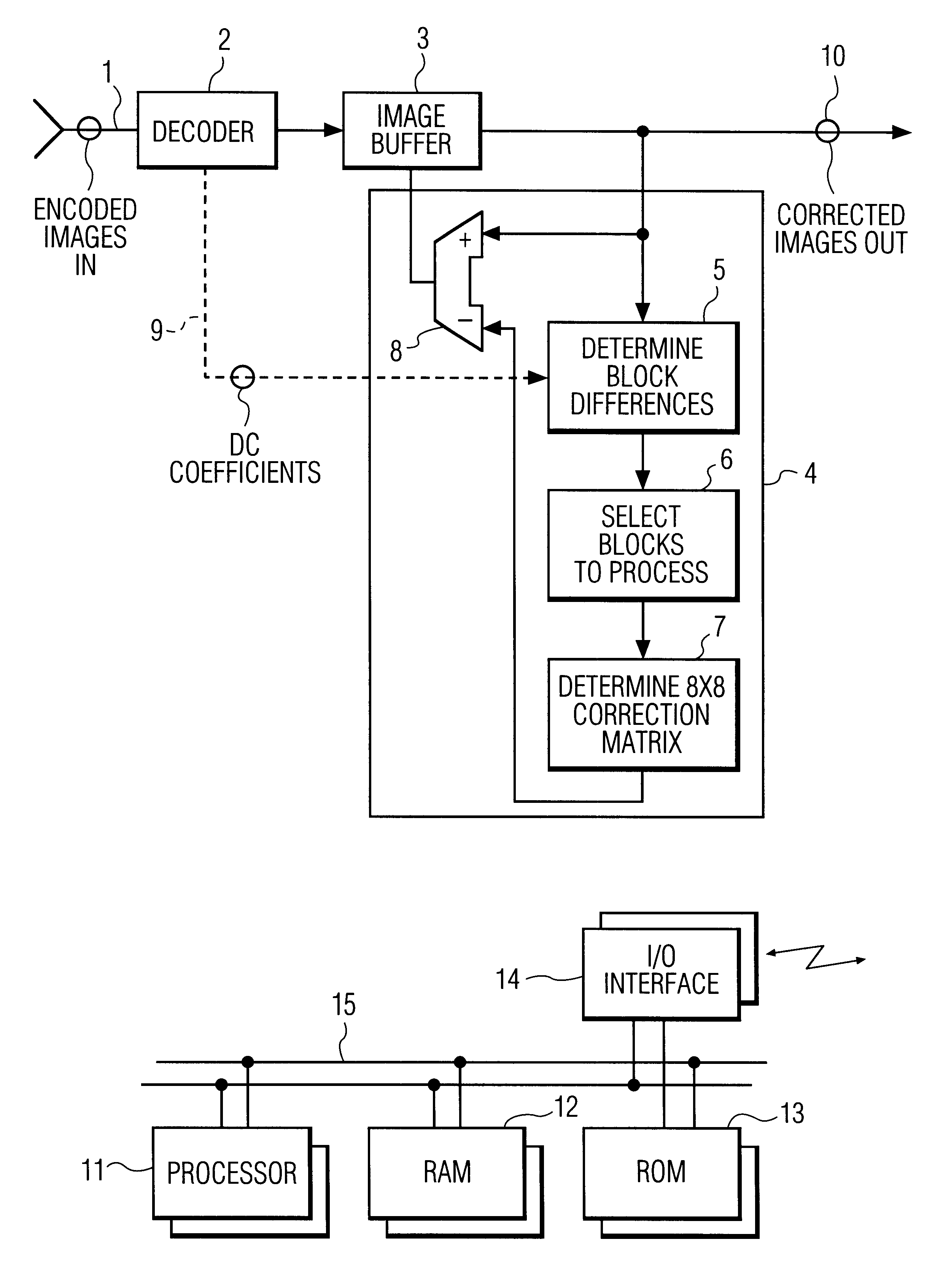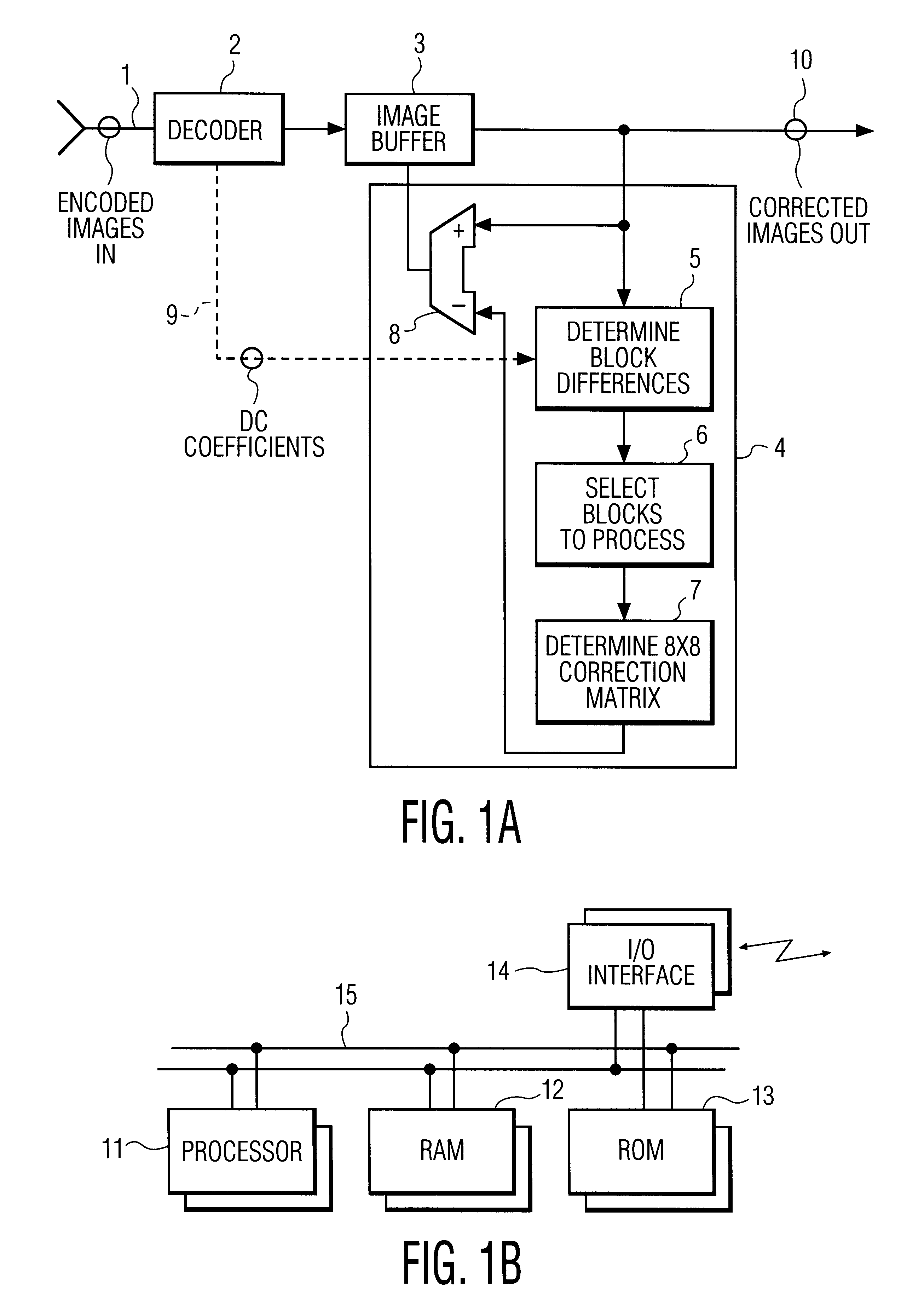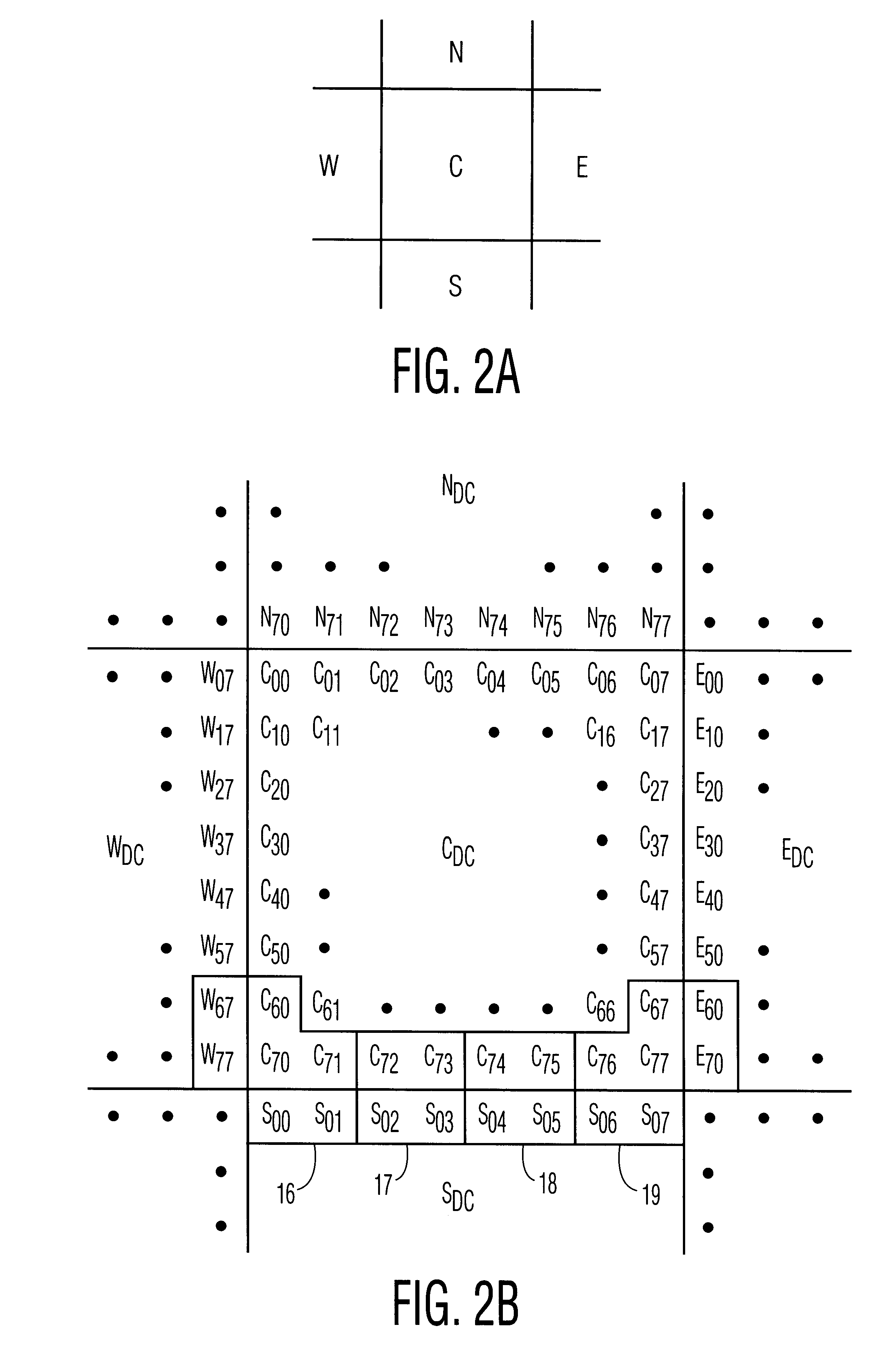Systems and methods for post-processing decompressed images
a post-processing and image technology, applied in the field of systems and methods for post-processing decompressed images, can solve the problems of loss of image information, coarser quantization the greater the loss, and the introduction of quantization errors can become particularly apparent and even objectionabl
- Summary
- Abstract
- Description
- Claims
- Application Information
AI Technical Summary
Problems solved by technology
Method used
Image
Examples
example
An example of the functioning of an alternative embodiment of the present invention is described herein. FIG. 5 is a 640.times.480 test image created by expanding each pixel of a 320.times.240 monochrome source image to four identical neighboring pixels. The source image has a luminance varying between 64 and 192 in a total range of 0 to 255 according to the following equations.
luminance=128+(64-4R)*cos(4R)
R=(radius in pixel widths / 40).sup.1.5
FIG. 6 is a DCT transform of this image with all DCT coefficients set to zero except for the DC coefficients. It represents a maximally compressed version of FIG. 5 having a maximum of blocking artifacts. Each 8.times.8 pixel block is clearly apparent.
FIG. 7 is a version of FIG. 6 post-processed according to the following early embodiment of the present invention. Sub-edge pixel differences A-L were determined as discussed above, resulting in four block-to-block pixel differences for each edge of each 8.times.8 pixel block. These coefficients w...
PUM
 Login to View More
Login to View More Abstract
Description
Claims
Application Information
 Login to View More
Login to View More - R&D
- Intellectual Property
- Life Sciences
- Materials
- Tech Scout
- Unparalleled Data Quality
- Higher Quality Content
- 60% Fewer Hallucinations
Browse by: Latest US Patents, China's latest patents, Technical Efficacy Thesaurus, Application Domain, Technology Topic, Popular Technical Reports.
© 2025 PatSnap. All rights reserved.Legal|Privacy policy|Modern Slavery Act Transparency Statement|Sitemap|About US| Contact US: help@patsnap.com



